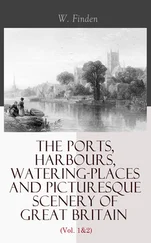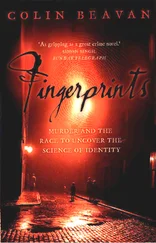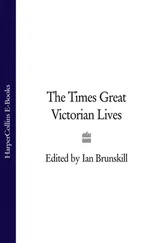276
After Jack's death . . . executor of her will.
From Charlotte Whicher's will and probate at the Court of Probate.
277
Williamson was . . . unofficial hours.'
From
Fifty Years of Public Service
(1904) by Arthur Griffiths.
277
The Chief Superintendent . . . a game of chess.
From
Scotland Yard: Its History and Organisation 1829-1929 (1929)
by George Dilnot.
277
'A Scot, from the crown of his head . . . valuable public servant.'
From
Scotland Yard Past and Present: Experiences of Thirty-Seven Years
(1893) by Timothy Cavanagh.
277
Field - who by the 1870s was reduced almost to poverty.
In a letter written in January 1874 from 'Field Lodge', his home in Chelsea, he begged a client for PS1 that he was owed - he had spent the past four months ill in bed, he said, and his doctor's bill was PS30. From a letter in the British Library manuscripts collection: Add.42580 f.219. Field died later that year.
277
In a notorious trial of 1877 . . . six detective inspectors.
From
Critical Years at the Yard: The Career of Frederick Williamson of the Detective Department and the CID
(1956) by Belton Cobb, and the census of 1881. Wilkie Collins also died in London in 1889, aged sixty-five.
278
According to a police commissioner . . . harassing work'.
Unnamed police commissioner quoted in
Scotland Yard: Its History and Organisation 1829-1929 (1929)
by George Dilnot.
278
the crypt of St Paul's Cathedral in London.
Most of the mosaic floor in the St Paul's crypt was made by female inmates of Woking prison between 1875 and 1877, according to the St Paul's chapter minute books for 1874-89.
278
Major Arthur Griffiths . . . intelligence was of a high order.'
From
Secrets of the Prison House
(1894) by Arthur Griffiths.
279
Griffiths returned in another memoir . . . her name was never mentioned.'
From
Fifty Years of Public Service
(1904) by Arthur Griffiths.
279
In 1877 Constance petitioned . . . marked her petition 'nil'.
Petitions and letters of support in HO 144/20/49113.
CHAPTER 19
283
In 1884 William . . . and Florence (twenty-five).
The information about William and his family in this chapter is drawn mainly from
Savant of the Australian Seas
(1997, revised 2005) by A.J. Harrison. Other sources include: 'Emigration of Women to Australia: Forced and Voluntary', a paper delivered to the Society of Genealogists in London by Noeline Kyle on 31 August 2005; the English census of 1881; and two of William's own books -
The Great Barrier Reef
(1893) and especially
The Naturalist in Australia
(1897).
286
At Burlington House, London . . . and torso'.
From
The Times
of 11 June 1896.
287
Two Japanese scientists were credited . . . before them.
The Australian pearl specialist C. Dennis George pointed out that the stepfather of the two Japanese pearl pioneers spent several months on Thursday Island in 1901, and had opportunity to observe William Saville-Kent's methods. George also argued that Saville-Kent succeeded in cultivating whole pearls before he died, and claimed that a string of these were found in the possession of a female vet in Brisbane in 1984; another set is rumoured to be in the possession of a family in Ireland. See
Savant of the Australian Seas (1997,
revised 2005) by A.J. Harrison.
288
Mary Ann and Elizabeth . . . corresponded to the end.
Information about the Kent family from death certificates and wills, correspondence in Bernard Taylor's archive and research in Australia by A.J. Harrison and Noeline Kyle. St Peter's Hospital is described in
Old and New London: Volume 6
(1878).
288
It emerged in the 1950s . . . under the name Emilie King.
From
Saint - with Red Hands?
(1954) by Yseult Bridges. Bridges said that she obtained the information first-hand, from a woman who was twenty-two when she met Constance in 1885. When Bridges wrote her book, the story of what subsequently became of Constance was unknown.
288
In the 1970s . . . Miss Kaye died.
Constance's Australian exile was disclosed in
Cruelly Murdered
(1979) by Bernard Taylor.
290
In her will . . . the first Mrs Kent.
In this will, written in 1926, Constance bequeathed the nurses' home she had established to a fellow nurse, Hilda Lord, and left her money to the Joseph Fels Fund. Fels (1853-1914) was a Jewish-American soap magnate, social reformer and philanthropist who established model communities for the unemployed and for craftsmen in England and the US. He believed that taxation should be based solely on land ownership. The account of the discovery of the family portraits left to Olive is from correspondence in Bernard Taylor's archive.
CHAPTER 20
291
In 1928. . .the origins of his death.
Rhode quoted and discussed this letter in an essay in
The Anatomy of Murder: Famous Crimes Critically Considered by Members of the Detection Club (1936).
The original letter was destroyed by enemy action in the Second World War, but Rhode's typed version survived.
294
At boarding school. . . gas leak is a convincing detail.)
The gas leak was mentioned in the
Somerset and Wilts Journal
in 1865. Constance was boarding at a school in Bath, according to the newspaper, when 'being offended with her teacher, she deliberately turned on the gas throughout the house, making no secret of the fact that her intention was to cause an explosion'.
294
The letter claimed that Constance read Darwin.
This was plausible, since
The Origin of Species
received a huge amount of attention when it was published in 1859. There was an impossibility in the letter, though - the author claimed that the young Constance used to shock people by referring to 'La Divine Sara' Bernhardt, but the actress - who was born in the same year as Constance - did not become famous until the 1870s.
295
Like the heroine . . . absorbed by the past.
In an essay of 1949 the psychoanalyst Geraldine Pederson-Krag suggested that the murder in a detective novel is a version of the 'primal scene', in which a child witnesses or imagines his or her parents having sexual intercourse, and interprets the act as violent. The victim represents one of the parents, the clues represent the nocturnal sounds, stains and jokes that the child observed but only dimly understood. The reader of a detective novel, says Pederson-Krag, satisfies his or her infantile curiosity by identifying with the detective and thus 'redressing completely the helpless inadequacy and anxious guilt unconsciously remembered from childhood'. See 'Detective Stories and the Primal Scene' in
Psychoanalytic Quarterly
18. In 1957 the psychologist Charles Rycroft argued that the reader was not only the detective but also the murderer, playing out hostile feelings towards the parent. See 'A Detective Story' in
Psychoanalytic Quarterly
26. These approaches are discussed in
Bloody Murder: From the Detective Story to the Crime Novel - a History (1972)
by Julian Symons.
296
The letter from Sydney threw out . . . corruptions of his own body.
Information on syphilis from
Читать дальше












